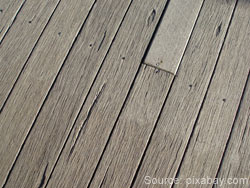
Your home's outer appearance makes a lasting impression on friends, family, neighbors--and perhaps most importantly--prospective buyers. Whether you have recently purchased your dream home and want to maintain its fresh, manicured appearance or you have just placed your house on the market, keeping the exterior in good shape is imperative. This guide will offer you some tips for maintaining your home's outer features so you can enjoy its beauty for years to come, as well as effectively market it to buyers if you ever intend to sell.
Your Siding
Wood
- Paint or stain your wood about every four years. The type of paint or stain you should use will depend on the type of wood you have. Check the siding periodically for chips or flaking and touch-up the exposed area.
- Inspect your wood siding regularly for any imperfections. Fill any holes, chips or cracks with paintable caulk.
- Don't let sprinklers or spray from your hose come in contact with your siding. Repeated or heavy exposure to water will cause bowed or expanded panels, disintegration and decay. Never wash your wood siding.
Vinyl
- Clean your siding annually to prevent grime and sediment buildup. Vinyl siding is the easiest to maintain, and can be cleaned simply with some household detergent and a hose.
- If your siding has a grain or pebble finish, dirt may become embedded and more difficult to remove. In this case, your siding may require more frequent washing.
- Vinyl siding's surface can become very brittle during the cold winter months. Avoid hitting or bumping it to prevent shattering.
- Keep barbeque grills away from the vinyl. Exposure to intense heat can melt the siding.
Aluminum
- Clean aluminum siding every six months to prevent the common problems of corrosion and oxidation. Corrosion shows up as dark blotches, and oxidation creates a white film on the aluminum.
- Inspect siding regularly for rust-colored stains from corrosion in places where moisture accumulates, such as under eaves. Remove the stain before it has a chance to spread by sanding it down to the bare metal and then using an anti-rust primer.
- To remove minor scratches, rub the area around the scratch with a fine rubbing compound. Rinse with water, dry, then apply a primer coat. Then carefully cover the scratch with as many coats of touch-up paint as needed, allowing each coat to dry before applying another. Finish with a polishing compound to blend and a coat of oil-based wax.
Deck

- You should clean your deck at least twice a year by washing off debris with a hose, applying a stain remover to remove dirt or grill stains, and sweeping away leaves to prevent mildew.
- Before applying a stain to your deck, use a wood preparation product. It will open the pores of the wood and facilitate the penetration of the finish. This will make the color more uniform and yield much longer-lasting results. After application, allow the product to soak in. Then scrub and rinse with a hose.
- Avoid using pressure washers prior to applying stain to your deck--the force of the water can break apart the wood's fibers and will make your deck appear "fuzzy" after staining.
- Stain should be reapplied to your deck every one to three years. Stains with more pigment will last longer than semi-transparent or clear stain.
Driveway
- Apply a seal to your black-top driveway once a year. This will protect the asphalt from damaging moisture--when water settles in crevices, it can freeze and expand. This causes unsightly and unsafe cracks to form in your driveway. Sealing will also restore your driveway to its dark and vibrant black color.
- Be sure not to "over-seal" your driveway--if you apply a driveway seal more than once a year, you can make the surface very slick and dangerous.
- Fix larger cracks with a filler made from fiberglass or another bonding agent. Applying a seal over the area once it’s dry will even out any color differences and protect the repair.
Lawn
- Mowing. Grass should be mowed to a height of three and half to four inches. Taller grass helps choke weeds, and can better withstand heat. No more than one-third of your grass' height should be mowed at a time. Never mow a wet lawn--it will compact the soil and the roots won't be able to breathe. This will cause your grass to die and you'll have unsightly bald patches in your lawn.
- Watering. In May and June, your lawn should be watered two to three days a week for 30 to 45 minutes per zone. From July to August, 45 minutes per zone four to five days a week is recommended. The best time to water your grass is just before sunrise.

- Fertilizing. Don't overdo it. You shouldn't fertilize your lawn more than three to four times a year-- in the early spring, early summer and early autumn. There are a wide variety of fertilizers available, and every type of grass has different needs. You can determine yours by taking a sample of your soil and sending it to a lab every three to four years. Distribute fertilizer evenly and don't mix different types. If you wish to be eco-friendly, choose an organic fertilizer, or opt for compost or manure.
Other Tips
- Hire an exterminator periodically to inspect your home's exterior and check for termite or insect damage. Keep the perimeter of your home's foundation clean and free of leaves, dirt and other build-up.
- Promptly repair cracks and damage in your walkways and patios. Touch up the paint on gates and fences frequently to prevent chipping and dullness.
- Inspect your roof for leak-causing damage, particularly around skylights, vents and chimneys.